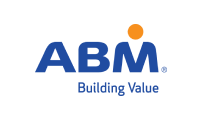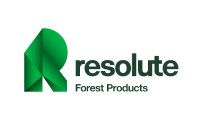U.S. corporations are shifting faster to circular economy models. This helps them meet sustainability goals while also securing supply chains against global disruptions. From mining and manufacturing to packaging and energy, the circular economy is no longer a niche concept—it is becoming a strategic priority for forward-thinking American companies.
What Is the Circular Economy?
The circular economy is an economic model that focuses on minimizing waste, maximizing resource efficiency, and creating closed-loop systems where materials are reused, remanufactured, or recycled. Unlike the linear economy of “take, make, dispose,” the circular approach keeps materials in use for longer. This reduces environmental impact and also creates new business opportunities.
The circular economy helps industries decarbonize while reducing material shortages and mitigating supply chain risks, as outlined by Oliver Wyman. As the sustainability agenda gains momentum, U.S. corporations are aligning with circular principles to meet regulatory demands, investor expectations, and consumer preferences for sustainable products.
The Business Case for U.S. Corporations
Several factors are propelling U.S. companies to invest in circularity:
-
Resource Resilience: Materials like precious metals, rare earths, and critical minerals are subject to supply chain risks and geopolitical tensions. Urban mining and recycling help companies mitigate these risks while reducing dependency on virgin materials.
-
Cost Savings and Efficiency: Circular solutions can lower production costs through waste reduction and process optimization. This is particularly critical as raw material prices remain volatile.
-
Regulatory and Policy Support: The U.S. Circular Economy Coalition (USCEC) has been instrumental in advocating for circular economy policies at the federal level. The coalition’s recent efforts have focused on scaling circularity across industries, supporting legislation that promotes recycling infrastructure and sustainable manufacturing.
-
Investor Pressure: Circular economy startups are increasingly attracting investor interest. A recent NetZero Insights report identifies leading investors actively funding circular solutions and highlights key startups driving innovation in this space. This growing investment signals a broader shift toward sustainable business models, although there is still room for scaling high-impact solutions.
Notable U.S. Corporate Initiatives
Sibanye-Stillwater’s $82M Recycling Investment
Mining giant Sibanye-Stillwater recently acquired Metallix Refining Inc., a North Carolina-based metals recycler, for $82 million. This deal bolsters the company’s recycling capacity for precious metals like gold, silver, and platinum recovered from industrial waste, positioning it as a leader in North America’s recycling landscape.
Dow’s Sustainable Packaging Innovation
Dow Chemical is pushing the envelope on sustainable packaging with the launch of INNATE™ TF-2205 Enhanced Stretch Resin. This resin improves the recyclability of flexible plastic packaging and has already been adopted in fully recyclable detergent packaging by Chinese firm Liby. Such innovations are vital for reducing the vast amounts of plastic waste that end up in landfills or oceans.
Solar Industry Circularity
The Solar Energy Industries Association (SEIA) unveiled a strategic plan in July 2025 to implement circular economy principles within the solar energy sector. This roadmap includes strategies for recycling solar panels, extending their lifecycle, and recovering valuable materials, essential for reducing the environmental impact of clean energy technologies.
Circularity Metrics: Progress and Gaps
Despite these strides, global circularity is stagnating. The Circularity Gap Report 2025 shows only 6.9% of global materials are reused, down from 9.1% in 2015. In the U.S., adoption varies significantly across industries, with sectors like electronics, textiles, and construction facing steep challenges in scaling circular practices.
Moreover, a comprehensive ScienceDirect study indicates that while U.S. firms are integrating circularity into their sustainability strategies, efforts often lack standardization and clear metrics to measure progress effectively.
Barriers to Consumer Acceptance
However, consumer perceptions remain a barrier. A recent study by Sustainable Brands and BSI/CISL revealed that around 50-60% of consumers doubt the quality and safety of recycled products. This skepticism can slow adoption unless companies enhance transparency, offer warranties, and communicate the benefits of circular products clearly.
Policy Support and Collaboration
Scaling the circular economy in the U.S. will require stronger policies, robust public-private partnerships, and cross-sector collaboration. The U.S. Environmental Protection Agency (EPA) has outlined strategies to promote recycling and sustainable materials management.
In addition, a recent Circle Economy report reveals that circular economy investments have surged, with companies raising nearly $164 billion between 2018 and 2023. However, only 4.7% of this funding supported high-impact solutions focused on product design, reuse, and material efficiency. The majority still flows into repair, resale, and recycling, leaving significant untapped potential for transformative circular innovations.
Looking Ahead
For U.S. corporations, embracing the circular economy is not just about environmental stewardship—it is a competitive advantage. Companies that adopt circular models can unlock new revenue streams, reduce operational risks, and meet the growing demand for sustainable products.
As highlighted by Bain & Company’s CEO Sustainability Guide, executives who prioritize circular economy strategies position their organizations to thrive in a world where sustainability and profitability are increasingly intertwined.
Final Thoughts
The circular economy is gaining ground, but the U.S. still has significant ground to cover. With concerted efforts from corporations, investors, policymakers, and consumers, the country can transition towards a more sustainable and resilient economic model.
For sustainability professionals and business leaders, now is the time to deepen expertise in circular strategies and integrate them into broader ESG goals. Investing in specialized Sustainability and ESG trainings can equip professionals with the skills needed to drive these transformations within their organizations.







